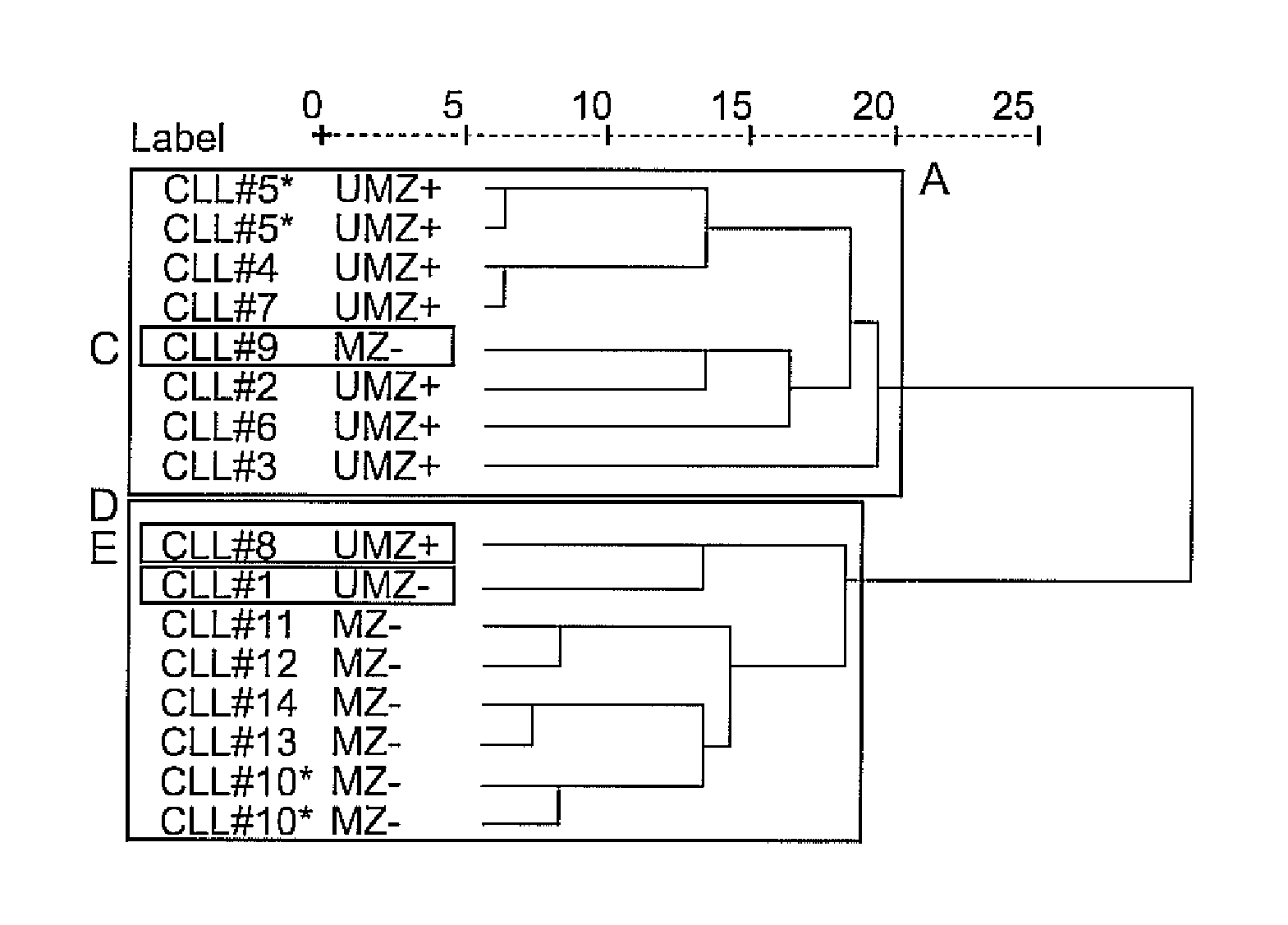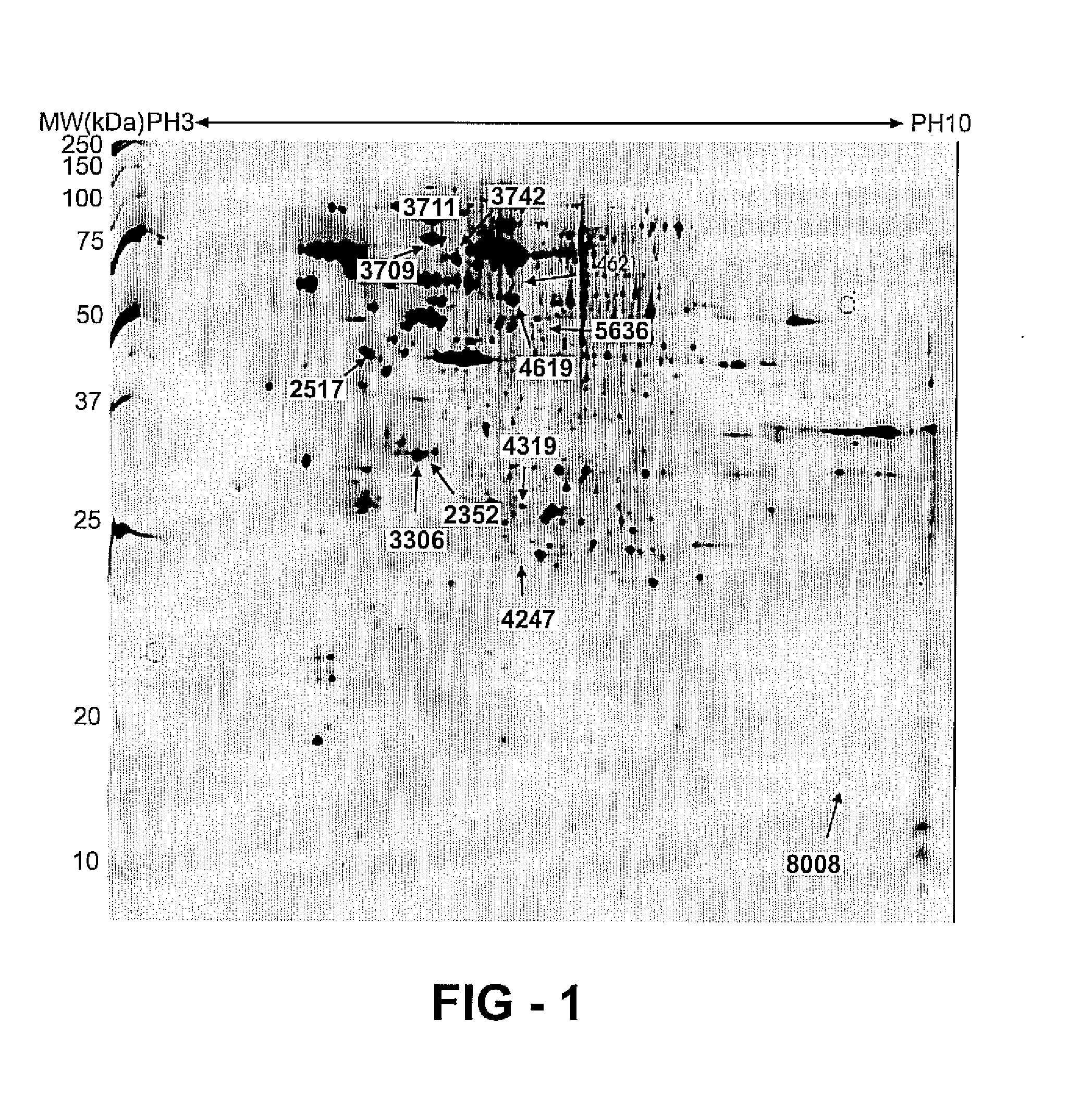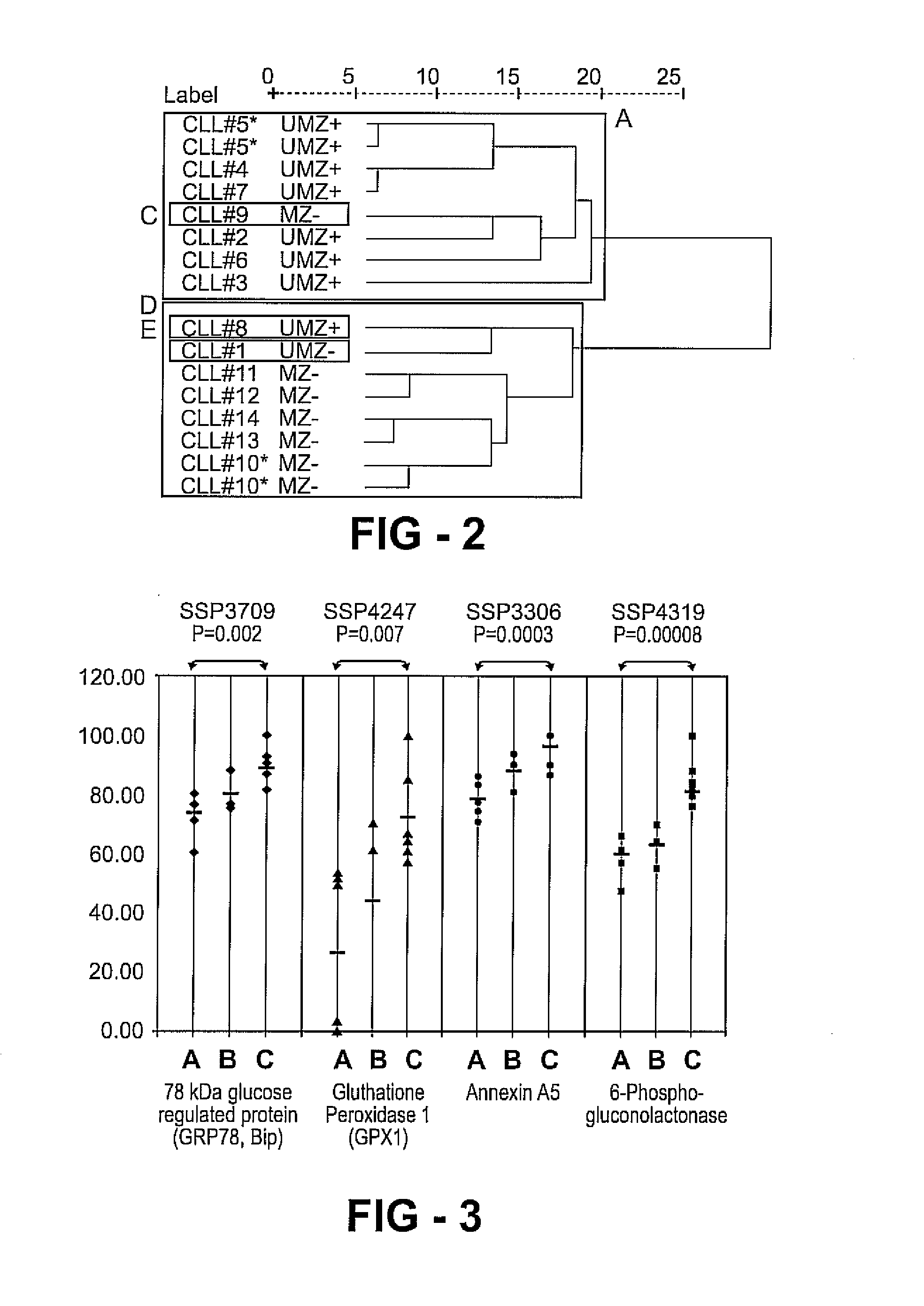Prognostic markers in chronic lymphocytic leukemia
a technology of lymphocytic leukemia and prognostic markers, which is applied in the field of prognostic markers in chronic lymphocytic leukemia, can solve the problems of repeated serious infections, death, and uncomfortable symptoms, and achieves less aggressive clinical course and positive prognosis
- Summary
- Abstract
- Description
- Claims
- Application Information
AI Technical Summary
Benefits of technology
Problems solved by technology
Method used
Image
Examples
example 1
Samples
[0129] Blood samples are obtained from patients who fulfill diagnostic and immunophenotypic criteria for common B-cell CLL, as described in Kipps, T. J., Williams Hematology 2001, 1163-1194, after signing an informed consent form approved by the institutional review boards of the University of California, San Diego. Blood mononuclear cells are isolated by density-gradient centrifugation over Ficoll-Hypaque (Pharmacia, Uppsala, Sweden). Cells are suspended in freezing medium containing 20% fetal bovine serum (FBS) and 5% DMSO for storage in liquid nitrogen. The mutational and ZAP-70 status is determined as described in Rassenti, L. Z., Huynh, L., Toy, T. L., Chen, L., et al., N Engl J Med 2004, 351, 893-901 and shown in Table 1.
[0130] Table 1 indicates patients in this study and their respective mutational and ZAP-70 status. CLL samples included in this study are marked with the corresponding patient ID number. For each CLL sample ZAP-70 levels (% ZAP) and percent sequence h...
example 2
Protein Extraction
[0134] Protein extraction is performed using the Ready Prep sequential extraction Kit from Biorad (Biorad, Hercules, Calif., USA). Frozen CLL blood mononuclear cell samples are thawed gently and washed 3 times at 4° C. in cool PBS (Gibco, Invitrogen Inc.). Pellets are resuspended in buffer I of the ReadyPrep Sequential Extraction Kit (Biorad) containing 40 mM Trisbase. To protect the samples from phosphatase and protease activity a cocktail of phosphatase inhibitors (Sigma, Steinheim, Germany) containing: cantharidin, bromotetramisole, microcystin LR, sodium orthovanadate, sodium molybdate, sodium tartrate and imidazole) and broad range protease inhibitors, inhibiting serine, cysteine and metalloproteases as well as calpains (Roche diagnostics, Mannheim, Germany) is added to each sample. Nucleic acids, which can disturb isoelectrical focusing and gel electrophoresis, as described in Shaw, M. M. and Riederer, B. M., Proteomics 2003, 3, 1408-1417, are removed from t...
example 3
Two-Dimensional Gel Electrophoresis
[0135] Fifty micrograms of the soluble protein extract is precipitated with cold acetone overnight at −20° C. After centrifugation at 20000 g for 5 minutes, the pellet is air dried. Two-dimensional gel electrophoresis (2-DE) is performed according to Görg et al. [Görg, A., Obermaier, C., Boguth, G., Harder, A., et al., Electrophoresis 2000, 21, 1037-1053] with minor adjustments. Briefly, 50 micrograms of the soluble protein extract of the CLL cells of each patient is dissolved in 340 microliters of rehydration buffer containing 7 M urea, 2 M thiourea, 4% (w / v) CHAPS, 20 mM DTT and 0.2% (w / v) Carrier Ampholyte solution (Amersham Biosciences, Uppsala, Sweden). Once the pellet is completely dissolved, each sample is incorporated overnight by rehydration in a 17 cm linear IPG strip (Biorad, Hercules, Calif., USA) with a pH gradient of 3 up to 10. After in-gel rehydration, the strips are iso-electrically focused on the protean IEF cell (Biorad, Hercule...
PUM
| Property | Measurement | Unit |
|---|---|---|
| molecular weight | aaaaa | aaaaa |
| dissociation constant | aaaaa | aaaaa |
| dissociation constant | aaaaa | aaaaa |
Abstract
Description
Claims
Application Information
 Login to View More
Login to View More - R&D
- Intellectual Property
- Life Sciences
- Materials
- Tech Scout
- Unparalleled Data Quality
- Higher Quality Content
- 60% Fewer Hallucinations
Browse by: Latest US Patents, China's latest patents, Technical Efficacy Thesaurus, Application Domain, Technology Topic, Popular Technical Reports.
© 2025 PatSnap. All rights reserved.Legal|Privacy policy|Modern Slavery Act Transparency Statement|Sitemap|About US| Contact US: help@patsnap.com



